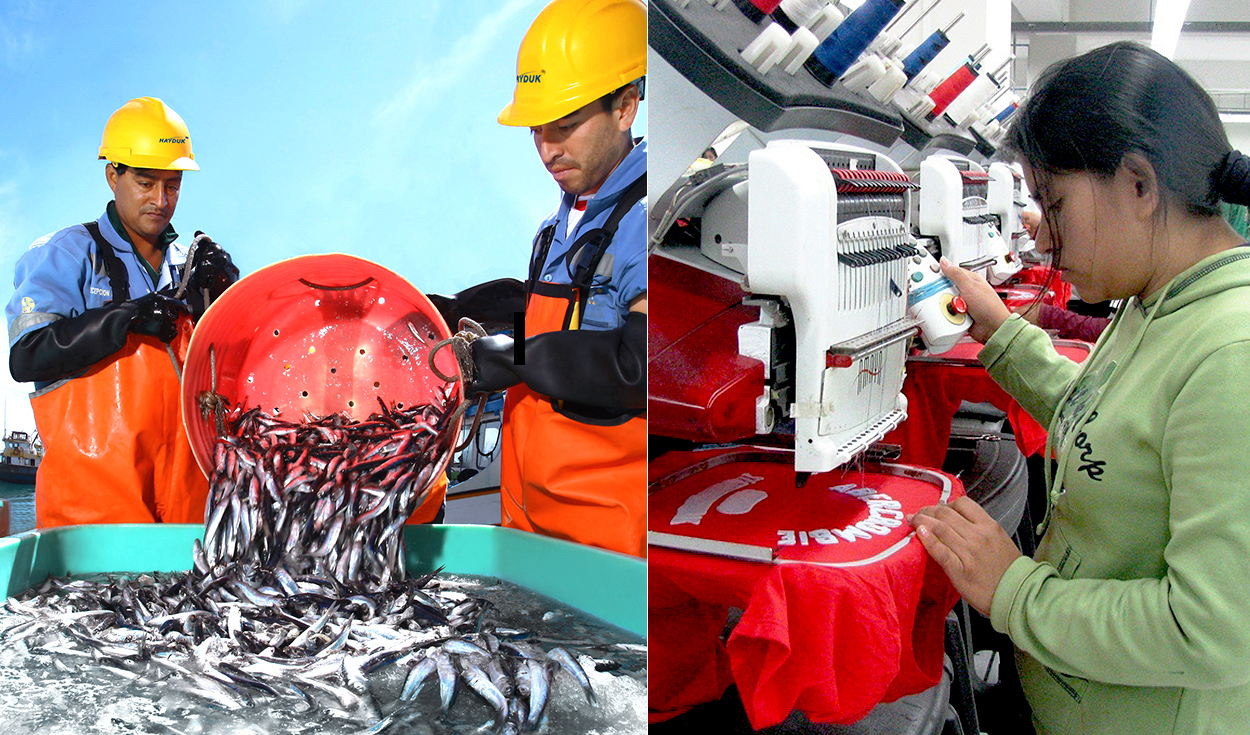
Jobs linked to Peruvian exports accumulated between January and October of this year they reached 3 million 200,655 between direct, indirect and induced, experiencing a decrease of -7.2% compared to the same period in 2022 (3 million 448,510), reported the Global Economy and Business Research Center of the CIEN-ADEX Exporters Association.
In that period of time, there were nine sectors that showed negative figures (traditional agriculture, fishing, hydrocarbons, clothing, steel metallurgy, textiles, miscellaneous, chemicals and wood) and the other five showed positive figures (mining, agroindustry, fishing and aquaculture, non-metallic mining and metalworking).
In October, lhe jobs generated by exports (411,519) showed an increase of 1.4% compared to the same month of 2022explained by the greater demand for labor in agroindustry (20.5%) and iron and steel (10.3%), thus reversing the consecutive falls of the previous 5 months (-13.8% in September, -12% in August, -9.8% in July, -6.9% in June and -0.7% in May).
Agroindustry and mining raised the numbers
Between January and October of this year, agribusiness stood out for its effect on job creation (1 million 288,259), achieving a slight growth of 0.4% due to the hiring of personnel destined for the processing and export of superfoods such as blueberries, avocados , grapes, asparagus, mangoes, among others.
Traditional mining followed (869,600) due to shipments of minerals such as copper, gold, zinc, iron, molybdenum and lead; and primary agriculture (305,324), due to the demand for the processing and export of coffee, sugar and other products.
For its part, the clothing category maintained a stock of 223,809, influenced by orders for cotton t-shirts, shirts, sweaters and baby clothing. While fishing and aquaculture generated 179,696, favored by the export of squid, squid, prawns, fish fillets, shrimp, canned tuna, among others.
Others were non-metallic mining (71,308), iron and steel (52,214), textiles (44,207), traditional fishing (39,025), miscellaneous (35,167)chemical (33,548), metalworking (32,446), wood (18,368) and hydrocarbons (7,683).
Only four sectors (agribusiness, fishing and aquaculture, non-metallic mining and metalworking) reached historical records in the number of jobs created, according to the report.
Data
- Between January and October 2023, the three regions with the highest export employability were Lima (750,722), Ica (417,805) and La Libertad (359,798), which accounted for 47.8% of the total. The capital had agroindustry and clothing as its main activities, while the other two had agroindustry and traditional mining.
- In contrast, the three departments with the least job creation were Loreto, Huánuco and Huancavelica, representing only 0.1% of the total, together.
Source: Larepublica
Alia is a professional author and journalist, working at 247 news agency. She writes on various topics from economy news to general interest pieces, providing readers with relevant and informative content. With years of experience, she brings a unique perspective and in-depth analysis to her work.











